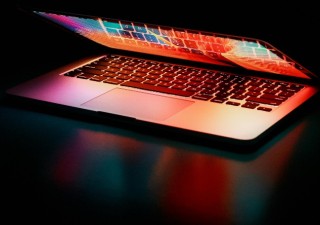Life Sciences Patents
10 September 2012

Life sciences is a broad field encompassing various specialized fields such as biomedical science, biochemistry, computational biology, bio-informatics, immunology, microbiology, oncology, pharmacology, medical devices and imaging, etc. While there are various studies being undertaken leading to myriad discoveries and inventions in this vast field every day, not every breakthrough can be protected in the form of patents, especially as per the Indian patent law.
First of all, Section 2(1)(j) of the Indian Patent Act, 1970 defines an invention as a new product or process involving an inventive step and capable of industrial application. Further, as provided by Section 3(c) of the Act, discovery of any living thing or nonliving substances occurring in nature is not considered an invention. Therefore, finding a new substance or microorganism occurring freely in nature is considered a discovery and not an invention. However, Section 3(j) of the Act excludes micro-organisms from the list of inventions not patentable. In practice, Section 3(j) is read together with Section 2(1)(j) and only genetically modified micro-organisms (GEMs) that result in enhancement of its known efficacies are held patentable in India.
Section 3(j) provides that plants or animals other than micro-organisms, but including seeds, varieties and species and essentially biological processes for production or propagation of plants and animals, are non-patentable inventions. Therefore, while a genetically modified micro-organism may be patentable, a transgenic animal mouse would not be considered patentable in India. However, a process for preparation of a product such as a vaccine, which may contain a living organism, may be patentable.
Similarly, plants, plant varieties and seeds as well as processes of their production or propagation are nonpatentable inventions. Section 3(h) also provides that a method of agriculture or horticulture is not patentable. A method of producing a new form of a known plant, even if it involved a modification of the conditions under which natural phenomena would pursue their inevitable course, is not patentable. However, a process which enhances economic value of a plant may be patentable. It may be noted that plant varieties, though nonpatentable subject matter, are provided protection in India under the provision of Protection of Plant Varieties and Farmers’ Rights Act, 2002.
In Speaking Roses International v. Controller General of Patents, the applicants claimed a method of providing an image on an organic product, specifically flowers. It was held that the patent was not for plants. The illustration setting out the method as well as the instrument thereof by which an image can be brought about on the flower or any other such organic product was a mechanical process, not a biological process. Therefore, it did not fall under Section 3(j).
In Dimminaco v. Controller of Patents and Designs and Others, the applicants claimed a process for preparation of infectious bursitis vaccine, which was invented for protecting poultry against infectious bursitis. The Controller objected to the application by stating that since vaccine contains living organism, it cannot be patented in view of Section 3(j). However, the court held that what was being claimed was a new process for preparation of a vaccine under specific scientific conditions and the said vaccine was useful for protecting poultry against contagious bursitis infection. There is no statutory bar to accept a manner of manufacture as patentable even if the end products contain living organism.
Further, it may be noted that method of treatment is not patentable in India. Section 3(i) provides that any process for the medicinal, surgical, curative, prophylactic, diagnostic, therapeutic or other treatment of human beings or any processes for a similar treatment of animals to render them free of disease or to increase their economic value or that of their product is non patentable invention. In an application claiming a method for in vitro production of isolated langerhans islet cells free from fibroblasts so as to be suitable for transplantation, it was held that the end product of the process is not a commercial entity and cannot be passed on from one person to another upon the transaction of purchase or sale.
The term “treatment” in Section 3(i) is to be interpreted in light of Joos v. Commissioner of Patents to mean that the purpose of application of a process or substance to the body must be to arrest or cure a disease or diseased condition or correcting some malfunction or amelioration of some incapacity or disability. The term “surgery” is to be interpreted as treatment of disease or injury by operation or manipulation. The term “diagnosis” is to be interpreted as identification of the nature of a medical illness, usually by investigating its history and symptoms and by applying tests. Therefore, if a method constitutes surgery, therapy or diagnosis practised on the human or animal body, it is considered non-patentable.
It may be noted that surgical, therapeutic, or diagnostic instrument or apparatus, prostheses or artificial limbs and their manufacture, including taking measurements on the human body to manufacture the same are outside the purview of Section 3(i). Methods of diagnosis performed on tissues or fluids which have been permanently removed from the body may also be patentable. Application of a substance to the human body purely for cosmetic purposes is neither treatment nor therapy and hence patentable too.
Lall Lahiri & Salhotra
LLS House, Plot No. B-28,
Sector - 32, Institutional Area,
Gurgaon - 122001, National Capital
Region, India
T: +91 124 2382202, 2382203
F: +91 124 4036823, 2384898
E: Rahul@lls.in
W: www.lls.in






